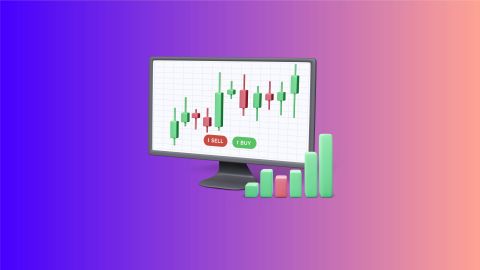Functions of Secondary Market
Liquidity and flexibility
The secondary market provides essential liquidity, allowing investors to sell their investments easily. This liquidity boosts investor confidence and ensures the continuous functioning of financial markets.
Price discovery
It facilitates accurate price discovery through the forces of supply and demand. Continuous trading ensures that security prices reflect their current market value.
Transfer of ownership
The secondary market enables the smooth and efficient transfer of ownership of securities issued in the primary market, contributing to market stability and operational efficiency.
Risk management
Investors can diversify or adjust their portfolios using various investment options available in the secondary market, helping to manage and reduce overall investment risk.
Example of secondary market transactions
To better understand the concept, let us consider a hypothetical scenario. Company ABC issues new shares through an initial public offering (IPO) in the primary market. Investors who purchase these shares in the IPO become the primary holders. If one of these investors decides to sell their shares to another investor, the transaction occurs in the secondary market.
This continuous cycle of buying and selling creates a dynamic environment where securities change hands based on supply and demand, influencing market prices.
Types of secondary market
Here are the types of secondary market in India:
1. Stock exchanges
Stock exchanges are organised and regulated platforms where buyers and sellers meet to trade financial instruments. Examples include the National Stock Exchange (NSE) and the Bombay Stock Exchange (BSE). These exchanges provide a centralised marketplace with transparent pricing regulated by the Securities and Exchange Board of India (SEBI).
2. Over-the-counter (OTC) markets
Unlike stock exchanges, over-the-counter markets operate without a centralised physical location. Trading in OTC markets is conducted directly between buyers and sellers, facilitated by market makers. OTC markets are commonly used for trading bonds, derivatives, and some stocks that may not meet the listing requirements of formal exchanges.
How does the secondary market work?
Here is how the secondary market works in India:
1. Trading platforms
In India, the secondary market primarily operates through established stock exchanges such as NSE and BSE. These exchanges provide organised and regulated platforms where buyers and sellers converge to trade securities. Additionally, over-the-counter (OTC) markets also play a role, allowing for direct trading between buyers and sellers outside the formal exchange structure.
2. Market participants
Participants in the secondary market include a diverse range of individuals and entities. Individual investors actively manage their portfolios, while institutional investors, including mutual funds and insurance companies, engage in substantial transactions. Traders seek to capitalise on short-term price movements, and market makers contribute to liquidity by facilitating transactions.
3. Brokerage firms
Investors in the secondary market execute transactions through brokerage firms. These firms act as intermediaries, receiving and executing buy and sell orders on behalf of investors. Investors can place orders through online or traditional means, and the broker ensures the proper execution of the transaction on the relevant market.
4. Orders
Investors in the secondary market can place market orders, where they accept the prevailing market price, or limit orders, where they specify the price at which they are willing to buy or sell. This flexibility allows investors to have greater control over their transactions.
5. Price determination
Similar to global markets, prices in the Indian secondary market are determined by the forces of supply and demand. The constant interplay of these factors results in fluctuations in security prices, reflecting the market's collective assessment of their value.
6. Clearing and settlement
The clearing and settlement process in the Indian secondary market involves entities such as the National Securities Depository Limited (NSDL) and Central Depository Services Limited (CDSL). They act as intermediaries, ensuring the efficient transfer of ownership and funds, thus completing the trade settlement.
7. Continuous trading
The secondary market operates continuously during market hours, providing investors with the opportunity to trade securities throughout the trading day. This continuous trading contributes to market liquidity and allows investors to make timely decisions.
8. Market information
Access to real-time market information is crucial for participants in the secondary market. Investors rely on accurate and timely data for making informed decisions. Market data is disseminated through various channels, including financial news platforms, online portals, and data providers.
9. Regulation and oversight
Regulatory bodies such as the Securities and Exchange Board of India (SEBI) play a crucial role in overseeing and regulating the Indian secondary market. These regulatory measures ensure fair practices, prevent market manipulation, and maintain the integrity of the securities market.
Importance of a Secondary Market
The secondary market offers several key benefits to the financial ecosystem:
Liquidity: It allows investors to easily buy and sell securities, ensuring a steady and accessible market. This flexibility supports investor confidence and enables smooth entry and exit from investments.
Price discovery: Continuous trading reflects market sentiment and investor expectations, helping to establish fair and transparent prices for securities based on real-time supply and demand.
Support for capital raising: An efficient secondary market encourages investment in new issues, as investors are assured of future exit options. This, in turn, helps businesses and governments raise capital more easily in the primary market.
Different instruments in the secondary market
Here are the different instruments within the secondary market:
1. Fixed income instruments
Fixed-income instruments are debt instruments that pay regular interest to investors with the promise of paying back the initial investment amount called principal. Some examples of fixed-income instruments are bonds, debentures, and preference shares.
A government or a corporation issues bonds to raise large amounts of funds. The issuer pays regular interest at a pre-defined rate and repays the principal amount at maturity. Although debentures are similar to bonds, they are backed by the general creditworthiness and assets of the issuing entity, but they are not secured by specific collateral.
On the other hand, preference shares represent ownership in a company with equity and debt characteristics. These shares typically have a fixed dividend rate, which must be paid before dividends can be distributed to common shareholders.
2. Variable income instruments
Variable income instruments are investments that do not have a fixed rate of return. Their return potential is based on several market factors and fluctuates in their value constantly. These types of instruments have a higher return potential than other types of secondary market instruments but come with a higher risk. Equities, mutual funds, and derivatives are the three most common types of variable income instruments.
Equities are shares of ownership in a company that entitles holders to a portion of the company's profits, usually through dividends, and make them part owners. Mutual funds are investment instruments that pool investors’ money to invest in a host of other investment instruments. Derivatives are financial contracts whose value is derived from underlying assets like stocks, bonds, or commodities.
3. Hybrid instruments
Hybrid instruments are created by combining two or more different financial instruments. Convertible debentures are an example of a hybrid instrument. They are instruments that are made available by corporations to investors as loans or debt securities with the option of converting them into equity after a certain period.
Advantages of secondary market
The secondary market offers liquidity and fair price discovery, allowing investors to easily trade existing securities.
- Liquidity: One of the primary benefits is the enhanced liquidity it offers, allowing investors to buy or sell securities with ease.
- Price discovery: The secondary market aids in establishing fair market prices through the continuous interaction of buyers and sellers.
- Accessibility: Investors can access a wide range of securities through various secondary market platforms, contributing to a diverse investment landscape.
Disadvantages of secondary market
- Market volatility: Prices in the secondary market can be subject to rapid and unpredictable fluctuations due to changing market sentiment.
- Transaction costs: Investors may incur transaction costs, including brokerage fees and taxes, when buying or selling securities.
- Risk of overtrading: Some investors may be tempted to engage in excessive buying or selling, leading to potential losses.
Difference between primary and secondary market
Here is a detailed table explaining the differences between the primary and secondary markets in India:
Particulars
|
Primary market
|
Secondary market
|
Definition
|
A place where new securities are issued.
|
A place for buying and selling existing securities.
|
Purpose
|
To raise capital for business purposes.
|
To provide liquidity and marketability for existing securities.
|
Participants
|
Issuers, underwriters, and investors.
|
Investors, brokers, and traders.
|
Nature of included transactions
|
Initial Public Offerings (IPOs).
|
Buying and selling of securities among investors and Follow-on Public Offerings (FPOs).
|
Price determination
|
Set by the issuer of shares with the help of underwriters.
|
Determined by market supply and demand.
|
Investment risk
|
Higher due to a lack of historical performance data.
|
Lower due availability of long-term finances and historical data.
|
Impact on company
|
Directly affects the company’s capital structure and funding.
|
Indirect impact; can influence a company's stock price and goodwill.
|
Conclusion
The secondary market functions as a dynamic and regulated platform, providing investors with the means to buy and sell existing securities efficiently. The operational aspects, including trading platforms, market participants, and regulatory oversight, contribute to the overall functionality and reliability of the Indian secondary market. Understanding these dynamics is imperative for investors seeking to navigate the intricacies of the Indian securities market.





